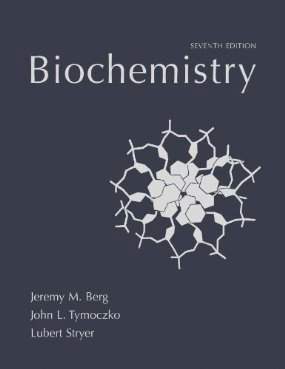Connecting...

For more information, please see full course syllabus of Biochemistry
Biochemistry Citric Acid Cycle III
This lecture covers the detailed mechanisms of reactions 5-8 in the citric acid cycle as well as related biosynthetic and anaplerotic reactions. It also investigates the overall energy balance. Glycolysis produces a few molecules of NADH, while the citric acid cycle produces both NADH and FADH₂. Each NADH can contribute two electrons to the electron transport chain to produce 2.5 molecules of ATP. One trip through the entire cellular respiration cycle which converts one molecule of glucose to CO₂ and water produces 30-32 molecules of ATP. Much of this gain comes from the conversion of NADH to ATP. NADH has to be transferred from the cytosol to the mitochondrion via one of two shuttle systems, the malate aspartate shuttle and the glycerol 3-phosphate shuttle, and then converted to ATP.
Share this knowledge with your friends!
Copy & Paste this embed code into your website’s HTML
Please ensure that your website editor is in text mode when you paste the code.(In Wordpress, the mode button is on the top right corner.)
- - Allow users to view the embedded video in full-size.










































 Answer Engine
Answer Engine




1 answer
Thu Sep 10, 2020 1:45 AM
Post by Sara Tee on September 7, 2020
Hello Professor, Why do we call Reaction 1 of Acetyl CoA & Oxacloacetate condensation when no water was removed? How should I think about the label 'condesation' for a reaction in term of the major thing that is going on? Many thanks!!
1 answer
Sun May 19, 2019 11:42 PM
Post by Swati Sharma on May 17, 2019
Dear Dr Raffi
I think the structure of Succinyl CoA is wrong here or is different fro the previous lecture. Please do let me know if i was misunderstood.
Thanks
Swati
1 answer
Tue Nov 15, 2016 3:46 AM
Post by Akouvi Ognodo on November 14, 2016
Good evening Sir,
Do you have any lecture about how these pathways, from Glycolysis to the citric acid cycle are controlled?
Thanks!
1 answer
Fri Feb 26, 2016 4:08 AM
Post by Vincent Bedami on February 23, 2016
I am having a problem starting a question and I am hoping you can help.
If you have a solution that contains the pyruvate dehydrogenase complex and all of
the enzymes of the citric acid cycle, but none of the intermediates of the citric acid.
If you add 3.0 mM each of pyruvate, coenzyme A, NAD+
, FAD, GDP, and Pi
(inorganic phosphate), how much CO2 would be produced?
Assume all of the enzymes are 100% active.
1 answer
Mon Dec 9, 2013 5:02 AM
Post by Jennifer Parkinson on December 7, 2013
Once again you have helped understand difficult concepts with ease - thank you for the great videos. My biochemistry exam is on Monday and I think I will pass thanks to these lectures.
1 answer
Sun Nov 24, 2013 7:09 AM
Post by tiffany yang on November 23, 2013
I remember that oxaloacetate uses PEP carboxykinase to be PEP in gluconeogenesis, so for PEP to become oxaloacetate, do we also use carboxykinase like the arrow listed in the slide? or should the arrow be the other way around for enzyme two? Thanks Raffi This is amazing. you are amazing.